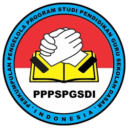PENERAPAN MODEL PEMBELAJARAN TPS (THINK PAIR SHARE) DALAM RANGKA MENINGKATKAN KETERAMPILAN KOMUNIKASI SISWA KELAS 3
DOI:
https://doi.org/10.35568/naturalistic.v3i2.394Keywords:
TPS (Think Pair Share), communication skills, interpersonalAbstract
The purpose of this study is to improve the communication skills of students through the TPS (Think Pair Share) learning model. the results of observations show communication skills of grade 3 students in SDN Ledok 05 Salatiga is still low. the results of interviews with grade 3 teachers from 29 students in the High category only about 31% who dared to present or communicate in front of the class with confidence. While in the medium category only 24% and 45% of other students in the low category are still afraid if they get the opportunity to communicate to appear in public or in front of the class. The research method uses PTK (Class Action Research). Techniques for collecting data through observation, interviews, questionnaires. The instruments used are indicators of five components of interpersonal or interpersonal communication skills which include openness, empathy, supportive attitude, positive attitude, equality. Research uses quantitative descriptive. The results showed that the first cycle of the high category had a frequency of 18 with a percentage of 62%, medium category frequency 6 and a percentage of 21%, and a low category 5 with a percentage of 17%. Whereas for the second cycle the high frequency category was 20 with a percentage of 69%, medium category 8 with 28%, and low category 1 with a percentage of 3%. Class 3 communication skills at SDN Ledok 05 Salatiga increased after using TPS (Think Pair Share) models.
Downloads
Downloads
Published
Versions
- 2020-07-06 (2)
- 2019-04-08 (1)
How to Cite
Issue
Section
License
Copyright of Journal Naturalistic : Jurnal Kajian Penelitian Pendidikan dan Pembelajaran (e-ISSN:2548-8589, p-ISSN:2528-2921).
Open Access Policy
This journal provides immediate open access to its content on the principle that making research freely available to the public supports a greater global exchange of knowledge.
This journal is open access journal which means that all content is freely available without charge to users or / institution. Users are allowed to read, download, copy, distribute, print, search, or link to full text articles in this journal without asking prior permission from the publisher or author. This is in accordance with Budapest Open Access Initiative.










